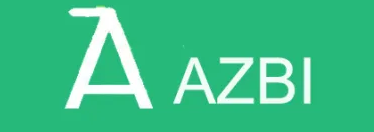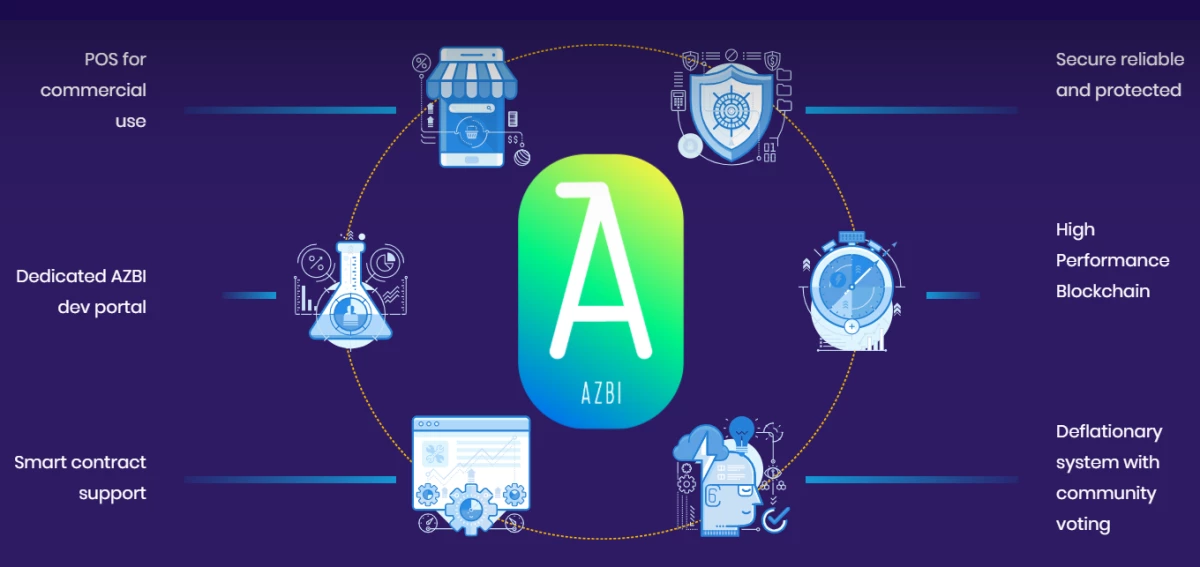THE AZBI NETWORK

INTRODUCTION
The society is in the age of ICT, Blockchain is the proof of how the internet has given real world asset value, FinTech which is finance plus technology is being utilized successfully on the blockchain through smart contracts and Dapps, Financial transactions can be made, executed and recorded in a trusted public ledger. Users can now create smart contracts to act as desired for their private businesses and organizations, yet there are still some issues the blockchain encounters when smart contracts are executed, such as;
The need to import data from different blockchain, the need to verify these imported data since the blockchains are generally closed systems to account for authenticity. Simply put; there is no unity across the different blockchain platforms, importing and verifying data waste resources and time. A waste of resources on very large transactions, Smart contracts are not compatible with the vast and different chains available, etc.

What is AZBI Network?
AZBI NETWORK is the first ever blockchain that is built to support transactions on multiple chains all on one platform.
The AZBI network at an infrastructural level supports EVM on multiple layers, the network is scalable and open sourced giving it the ability to upgrade and support new developing and upcoming chains.
AZBI TECHNOLOGY
The AZBI network innovates smart contracts for non-native token users through cross chain calling. The smart contract uses AZBI network tools to support use of tokens and BCH with ERC20 protocol. The basic idea is that the tools provided by the network are used on other blockchains and ignites a smart contract on the network with tokens from other blockchains, the tokens will be acquired in the first instance through the toolkit by way of a smart data driven knowledge graph. When the AZBI token number reaches a convertible number to the off chain token, the tools will act to transfer that number of tokens from the AZBI network to consume the corresponding amount of off platform tokens for invoking the smart contract.
The smart contract will be carried by a took called the OP_RETURN, which will carry a limited amount of information and will be used to add new instructions for carrying further information in the future. After a set number of tokens are obtained and entitled, tokens which follow the ERC20 protocol can be used to make the corresponding withdrawals and invoke the smart contract. As the AZBI is supportive of EVM it can support issuing tokens which follow ERC20 protocol. The AZBI network will have the ability to access a variety of external public blockchains.
Transactions will be verified and executed in serial number without any concern for the consensus garnered from either the POW or POS mechanisms. Currently, the POW based blockchain is popular, such as can be seen on the Bitcoin network, and even on the Ethereum network. Mining consumes a lot of time and that time factor is more than just the time required to verify and to execute any transaction. The best result is that the entirety of the network is able to exploit on node’s worth of power, thus creating a situation that cannot be improved easily since the structure cannot be expanded.
Execution can be done in a hierarchical manner, with the main chain and the child chain method. The main chain in this structure would be providing the initial registration, the search, providing the storage, the deposit, and other types of services that the child chain would require in order to support any cross chain transaction. A specific business logic can be facilitated through the creation of a child chain which can eliminate the requirement for all business transactions to be performed on the same chain. This acts to vastly reduce the pressure on both operations and on storage for the main chain. The child chain, at the same time, can eliminate any type of interference of another service within the single chain model approach.
In a specific chain that has several nodes, transaction level sharding can be employed automatically in the AZBI network to enable the inside sharding mechanism where there are many transactions and nodes. In order to do this the current time point is marked as being the new epoch (new beginning). The AZBI network would then separate each of the nodes in the chains through verifiable and random based functions, which would divide them sequentially into groups referred to as execution groups. With this process, some of the qualified nodes will be selected to form a different group that will be the governance group. Incoming transactions would then come in and be classified through sending transactions off to different execution groups, which could be based on the type of user and the category of user who created the request for initiation.
The execution would then be performed and verified internally to reach a transaction level consensus. After a set amount of time, the execution groups would all package and submit the transactions lists from the groups for a consensus to be reached at block level. The new block would then be formed and broadcast across the entire network by the governance group. Each epoch would end with the synchronisation of all nodes for the new block in a set state, then entre the new epoch. This allows for a parallel implementation of verification and will get rid of the drawbacks associated with single chains and single nodes.
There is a POS mechanism on the AZBI network which is used for each chain which acts to increase the efficiency in forming blocks and packaging transactions. Mining time lags are also avoided, and operation efficiency is improved overall. Since Non-Turing complete script languages were implemented to Java, Nodejs and Go, blockchains were able to support smart contracts through a wide variety of ways. EVM acts to support Solidity, which is a new language; EVM completes business logic, taking control of instructions and being able to stop any type of malicious code logic. Calculations are transparent and the cost is reasonable for the calling of smart contracts through instruction execution and consumption of memory. There are a complete set of RPC mechanisms on EVM + Solidity, which perfectly supports the Nodejs Truffle framework, allowing for easy access and programming convenience.
Given these factors, the AZBI network has used EVM + Solidity for the execution of smart contracts, for both the side chain and the main chain. This allows any EVM user to build a new DApp, or migrate an existing DApp, quickly and easily.
AZBI Network Smart Contracts
Smart Contracts are being carried by tools called OP-RETURN which transfers limited information which will also be used in adding new instructions for executing further instruction in the future. After some tokens are being obtained and entitled ERC20 protocol token will be used for invoking the smart contract and making corresponding withdrawals .AZBI being supportive to EVP can be used in issuing ERC20 compatible tokens .AZBI network have full capacity to access different external public blockchains. Transactions are verified and executed serially with any worry about consensus emanated from either PoW or PoS mechanism.Proof of Work (PoW) based blockchain is a very popular system adopted by Ethereum and Bitcoin Network . Mining with this Consensus algorithm takes lots of time to verify transactions.

AZBI Blockchain Deflationary Concept
The Blockchain AZBI implements deflationary system that works this way: Each AZBI token transfer requires 1% of it to be burned while 3% are moved to the staking fund wallets and the rest 96% goes to the recipients .This is a very brilliant model adopted by AZBI network .This system will ensure price stability and constant deflation in the Network . As as the moment am writing this article the staking take of AZBI network is set at 20% per annum . The Staking platform is live and running and can be access via this website :https://Azbi.Io/Stake/

AZBI TOKEN
Contract address: 0x21efe20be784ac5da569f72070e64525f95ccab6
Symbol: AZBI
Decimals: 18
Total supply: 20 000 000 000 AZBI
Roadmap
August 2019
Research
November 2019
Proposal draft and review
February 2020
AZBI Limited formation
March 2020
User base formation, advertising
April 2020
Staking rewards initialization
October 2020
AZBI Testnet bughunt (selected testers)
December 2020
AZBI Testnet bughunt (public)
February 2021
AZBI Testnet launch (staking activated)
May 2021
AZBI Mainnet bughunt (selected testers)
July 2021
AZBI Mainnet bughunt (public)
November 2021
AZBI Mainnet launch (staking activated)
February 2022
Community governance activation
Team
Michael Wang: AZBI Founder
Alina Ranta: Network Engineer
Roberta Byrd: Senior Graphic Designer
Miranda Weaver: Community Relations
Mike Kim: Full Stack Engineer
For More Information Click Links Bellow:
- Website: https://azbi.io/
- Whitepaper: https://azbi.io/stake/azbi_wp_2020.pdf
- Telegram: https://t.me/azbi_io
- Medium: https://medium.com/@azbi
- Twitter: https://twitter.com/azbi_io
Author: KHAN SHIQ QHEIL
My Bitcointalk Profile: https://bitcointalk.org/index.php?action=profile;u=2550289
Tidak ada komentar:
Posting Komentar